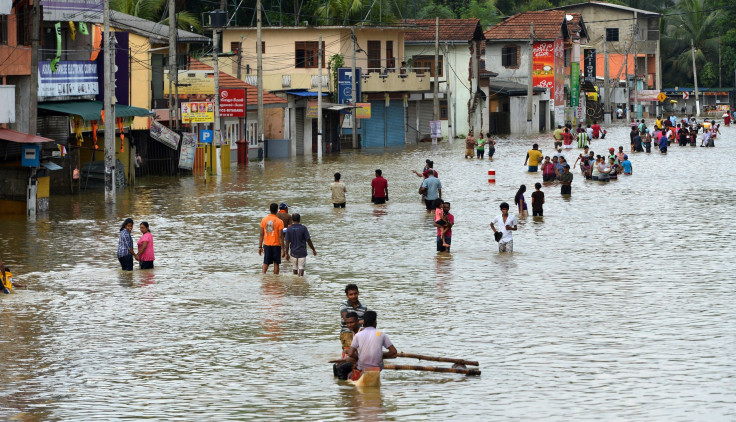Sri Lanka Floods, Landslides Claim Over 160 Lives, Rescue Underway Before Rain Resumes

At least 166 people are dead and more than 100 others missing due to flooding and mudslides from monsoon rains across southwestern portions of Sri Lanka during the weekend, according to the state-run Disaster Management Center.
The disaster also led to the displacement of nearly half a million people from their homes. The center also said the flooding was the worst since torrential rains in 2003 hit the island nation. The authorities estimated almost 442,000 people were affected by the disaster and more than 1,800 homes were destroyed or damaged.
Sri Lanka floods: Death toll rises to 166 and 102 people missing, according to Disaster Management Centre #lka #FloodSL
— Meera Srinivasan (@Meerasrini) May 29, 2017
More rain is expected Monday and rescuers rushed to evacuate people from the most vulnerable areas in the country. According to Associated Press, more than 100,000 have already been taken to safety in 339 relief camps set up in the south and west of the country.
During the weekend after the disaster had a grave impact, Sri Lanka's Ministry of Foreign Affairs activated its Emergency Response Unit and called on the United Nations' International Search and Rescue Advisory Group, along with its neighboring countries to help in the recovery effort. The government deployed 2,000 military personnel in the affected areas.
About 115 deaths, 111 missing and 430,000 pax are affected of the flooding in #SriLanka. @WorldVision will immediately distribute supplies. pic.twitter.com/9kHWT7G3BE
— World Vision Asia-Pacific (@WVAsia) May 29, 2017
"We have a problem of limited resources to cope with the situation," Foreign Minister Ravi Karunanayake said. "Hence we have made many appeals." On Friday he said he was expecting two ships full of relief supplies to arrive over the weekend from neighboring country, India, to help meet the needs of the people. On Saturday, an Indian naval ship arrived in Colombo with medical teams and relief supplies.
Read: Sri Lanka Floods 2016: Over 150 Feared Dead As Rain-Triggered Landslides Hit 3 Villages
After the government’s appeal, the UN said it was assisting in relief efforts including the donation of tents, water purification tablets, and other supplies for the displaced. Pakistan and the United States also promised to send in relief supplies, after India sent shiploads of supplies over the weekend.
On Monday, Sri Lanka's Department of Meteorology warned more heavy rainfall was expected in some of the already affected areas.
People in the town of Agalawatte in the Kalutara District of Sri Lanka said they had no hope of the water levels going down anytime soon. “All access to our village is cut off. A landslide took place inside the village and several houses are buried. But nobody could go to that place,” resident Mohomed Abdulla, 46, told Reuters. Agalawatte is located 74km (46 miles) from the capital of Sri Lanka, Colombo. It has recorded 47 deaths and 62 people missing after the disaster.
Due to the continual downpours and lack of electricity, rescue operations have been hampered. Reuters also reported their correspondents witnessed some people stuck on the upper floors of their houses and several houses were also flooded up to the roof.
“We are displaced and have no place to go,” said Rathana Kumari, who ran from her flooded home along with her family and took shelter on the Southern Expressway, which is a major highway linking the commercial capital of Colombo with the cities of Galle and Matara.
“Now we are extremely helpless with our little children. Today, we didn’t get anything to eat,” Kumari told the Associated Press on Monday.
© Copyright IBTimes 2024. All rights reserved.






















